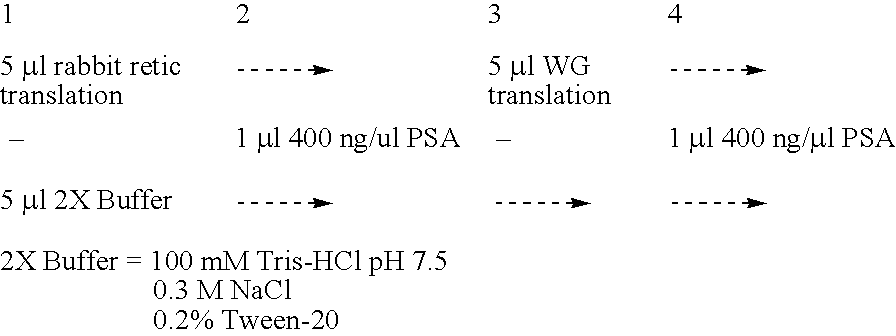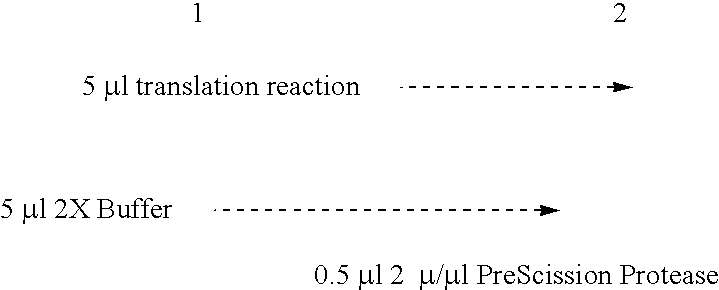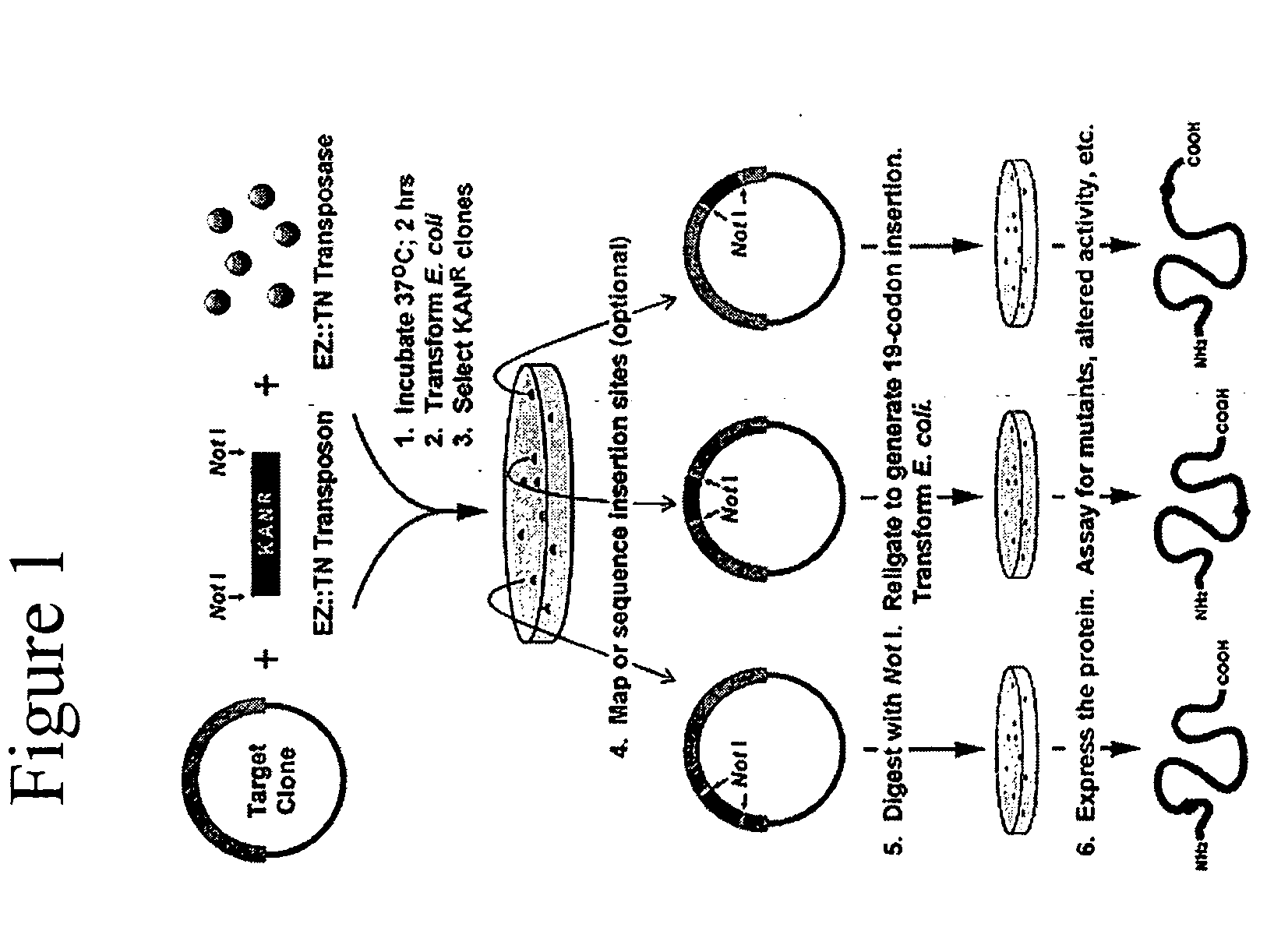Luciferase biosensor
a luciferase and biosensor technology, applied in the field of biochemical assays and reagents, can solve the problems of limited electrochemical or caloric detection methods, and achieve the effect of improving the stability and stability of the enzym
- Summary
- Abstract
- Description
- Claims
- Application Information
AI Technical Summary
Benefits of technology
Problems solved by technology
Method used
Image
Examples
example i
Tn5 Insertional Mutagenesis of a Click Beetle Luciferase Gene
A. Transposon Insertion Reaction
[0223] Target DNA Preparation. A click beetle luciferase gene (cbg69) was cloned into an E. coli T7 expression vector and the resulting plasmid (pJLC 1) was used as target DNA for transposon mutagenesis reaction.
[0224] In Vitro Transposon Insertion Reaction. Reaction conditions were optimized to maximize the efficiency of the transposon insertion while minimizing multiple insertion events. For example, an equimolar amount of the transposon was added to the moles of target DNA. [0225] 1. Prepare the transposon insertion reaction mixture by adding in the following order: [0226] 1 μl 10× reaction buffer [0227] 0.35 μg target DNA (pJLC1) (7 μl) [0228] 1 μl molar equivalent transposon [0229] 1 μl transposase [0230] 10 μl total reaction volume [0231] 2. Incubate the reaction mixture for 2 hours at 37° C. [0232] 3. Stop the reaction by adding 1 μl stop solution. [0233] Mix and heat for 15 minut...
example ii
Tn-7 Insertional Mutagenesis of a Firefly Luciferase Gene
[0247] A commercial kit (GPS™-M GPS-Mutagenesis System from New England Biolabs (NEB)) was used to insert a Tn7-based transposon randomly into firefly luciferase DNA. The major portion of this insert was then excised by restriction enzyme digestion and religation to yield a 5 amino acid insertion. Initially, colonies were grown and screened pre-excision for loss of luciferase activity. Plasmids in those cultures which had luciferase activity were then excised, transformed back into cells and colonies examined for a return of luciferase activity. Later, a more efficient approach was used where a gel-purified luciferase fragment containing the large insertion at random locations was cloned into a vector and mass-excision of the vector population was performed. Here, colonies were chosen which expressed luciferase activity following transformation with the excised vector. Because the transposon carried kanamycin resistance it wa...
example iii
Modified Click Beetle Luciferases with Modifications In the Hinge Region
[0278] In order to conveniently insert various sites of interest into the positions identified by transposon mutagenesis study, a click beetle luciferase gene (cbg69) was modified to generate two unique restriction enzyme sites, SnaBI (TACGTA) and SalI (GTCGAC), flanking the sequence encoding the hinge region. Specifically, two oligonucleotides: GGCTACGTAAACAATGTGGAG (SEQ ID NO:9) and GCCACTAAAGAAGCCCGTCGACGATGATGGCTGGCTC (SEQ ID NO:18), were used to modify the cbg69 gene using GeneEditor (Promega). The resulting click beetle luciferase, Cbg69ss, which has one amino acid substitution of Ile409 to Val, was shown to be twice as active as the wild-type Cbg69. The plasmid harboring cbg69ss (pJLC1ss) was used as a template to generate other luciferases with modifications in the hinge region. To that end, the following pairs of oligonucleotides were synthesized:
6His-aGTGAACCATCACCATCACCATCACAATGTGGAGGCC(SEQ ID NO:3...
PUM
| Property | Measurement | Unit |
|---|---|---|
| Fraction | aaaaa | aaaaa |
| Fraction | aaaaa | aaaaa |
| Fraction | aaaaa | aaaaa |
Abstract
Description
Claims
Application Information
 Login to View More
Login to View More - R&D
- Intellectual Property
- Life Sciences
- Materials
- Tech Scout
- Unparalleled Data Quality
- Higher Quality Content
- 60% Fewer Hallucinations
Browse by: Latest US Patents, China's latest patents, Technical Efficacy Thesaurus, Application Domain, Technology Topic, Popular Technical Reports.
© 2025 PatSnap. All rights reserved.Legal|Privacy policy|Modern Slavery Act Transparency Statement|Sitemap|About US| Contact US: help@patsnap.com



